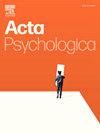The effect of implicit and explicit motor learning on a targeting task in children with autism spectrum disorder (ASD)
IF 2.1
4区 心理学
Q2 PSYCHOLOGY, EXPERIMENTAL
引用次数: 0
Abstract
This study aims to investigate the effect of different implicit and explicit instructions on learning a fundamental motor skill (throwing task) in autistic children with a high propensity for reinvestment. A total of 48 male volunteer students with special educational needs aged between 7 and 9 years old were conveniently selected to practice a novel throwing motor task (slingerball). The study includes a 1-week the acquisition phase with five phases of measurements involving four groups: a) analogy, b) explicit instruction, c) errorless, and d) errorful paradigms. It was conducted in five phases: pre-test, acquisition, retention, transfer, and dual-task, using a quasi-experimental design. The task in this study was to throw a slingerball’ towards a horizontal target on the ground. Mixed-design analysis of variance (ANOVA) and LSD post-hoc test performed to determine the interaction and main effects on throwing accuracy. The results indicated that participants in the analogy and errorless instruction groups had higher throwing accuracy in all phases of acquisition, retention, transfer and dual task compared to the explicit and errorful instruction groups (P ≤ 0.05). Moreover, both implicit learning groups performed more accurately in the dual task test than the explicit group (P ≤ 0.05). The results of this study support the theoretical framework that implicit practice can improve motor skill learning in children with autism spectrum disorder more than explicit practice. So, the application of errorless learning and analogy instruction is recommended for developing of motor performance and learning as implicit learning methods in educational environments.
求助全文
约1分钟内获得全文
求助全文
来源期刊

Acta Psychologica
PSYCHOLOGY, EXPERIMENTAL-
CiteScore
3.00
自引率
5.60%
发文量
274
审稿时长
36 weeks
期刊介绍:
Acta Psychologica publishes original articles and extended reviews on selected books in any area of experimental psychology. The focus of the Journal is on empirical studies and evaluative review articles that increase the theoretical understanding of human capabilities.
 求助内容:
求助内容: 应助结果提醒方式:
应助结果提醒方式:


